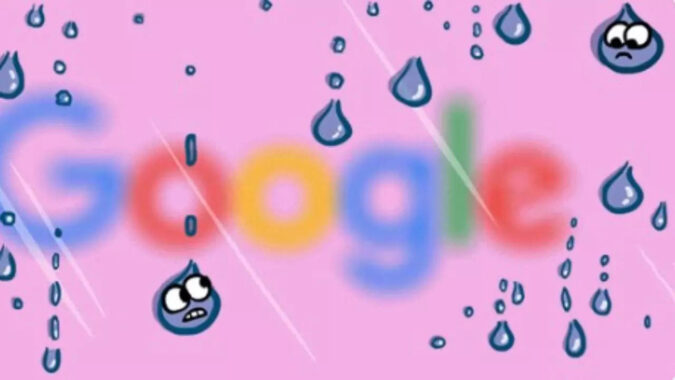Google, on the occasion of Valentine‘s Day on Tuesday, showcased an animated doodle that celebrates the most romantic day of the year. The doodle, showing two water droplets falling apart before they come together and form a heart, is captioned ‘Rain or shine, will you be mine?’.
It is said that in the Middle Ages, European countries like England and France believed that February 14 was the start of mating season for birds. They associated this phenomenon with love and began romantic celebrations soon after. The holiday became more popular across the world in the 17th century.
Valentine’s Day, also called Saint Valentine‘s Day or the Feast of Saint Valentine, is thought to have been named in honour of Saint Valentine, a third-century Roman Catholic priest, who died on February 14 in 270 AD. It originated as a Christian feast honouring one or two early Christian martyrs named Saint Valentine.
Valentine’s Day customs of sending gifts developed in early modern England and spread throughout the English-speaking world in the 19th century. Later in the 20th and early 21st centuries, these spread to other countries.
There are a number of martyrdom stories associated with various Valentines connected to February 14, including an account of the imprisonment of Saint Valentine of Rome for ministering to Christians persecuted under the Roman Empire in the third century. According to an early tradition, Saint Valentine restored sight to the blind daughter of his jailer. Numerous later additions to the legend have better related it to the theme of love: an 18th-century embellishment to the legend claims he wrote the jailer’s daughter a letter signed ‘Your Valentine’ as a farewell before his execution; another tradition posits that Saint Valentine performed weddings for Christian soldiers who were forbidden to marry.
It is said that in the Middle Ages, European countries like England and France believed that February 14 was the start of mating season for birds. They associated this phenomenon with love and began romantic celebrations soon after. The holiday became more popular across the world in the 17th century.
Valentine’s Day, also called Saint Valentine‘s Day or the Feast of Saint Valentine, is thought to have been named in honour of Saint Valentine, a third-century Roman Catholic priest, who died on February 14 in 270 AD. It originated as a Christian feast honouring one or two early Christian martyrs named Saint Valentine.
Valentine’s Day customs of sending gifts developed in early modern England and spread throughout the English-speaking world in the 19th century. Later in the 20th and early 21st centuries, these spread to other countries.
There are a number of martyrdom stories associated with various Valentines connected to February 14, including an account of the imprisonment of Saint Valentine of Rome for ministering to Christians persecuted under the Roman Empire in the third century. According to an early tradition, Saint Valentine restored sight to the blind daughter of his jailer. Numerous later additions to the legend have better related it to the theme of love: an 18th-century embellishment to the legend claims he wrote the jailer’s daughter a letter signed ‘Your Valentine’ as a farewell before his execution; another tradition posits that Saint Valentine performed weddings for Christian soldiers who were forbidden to marry.
